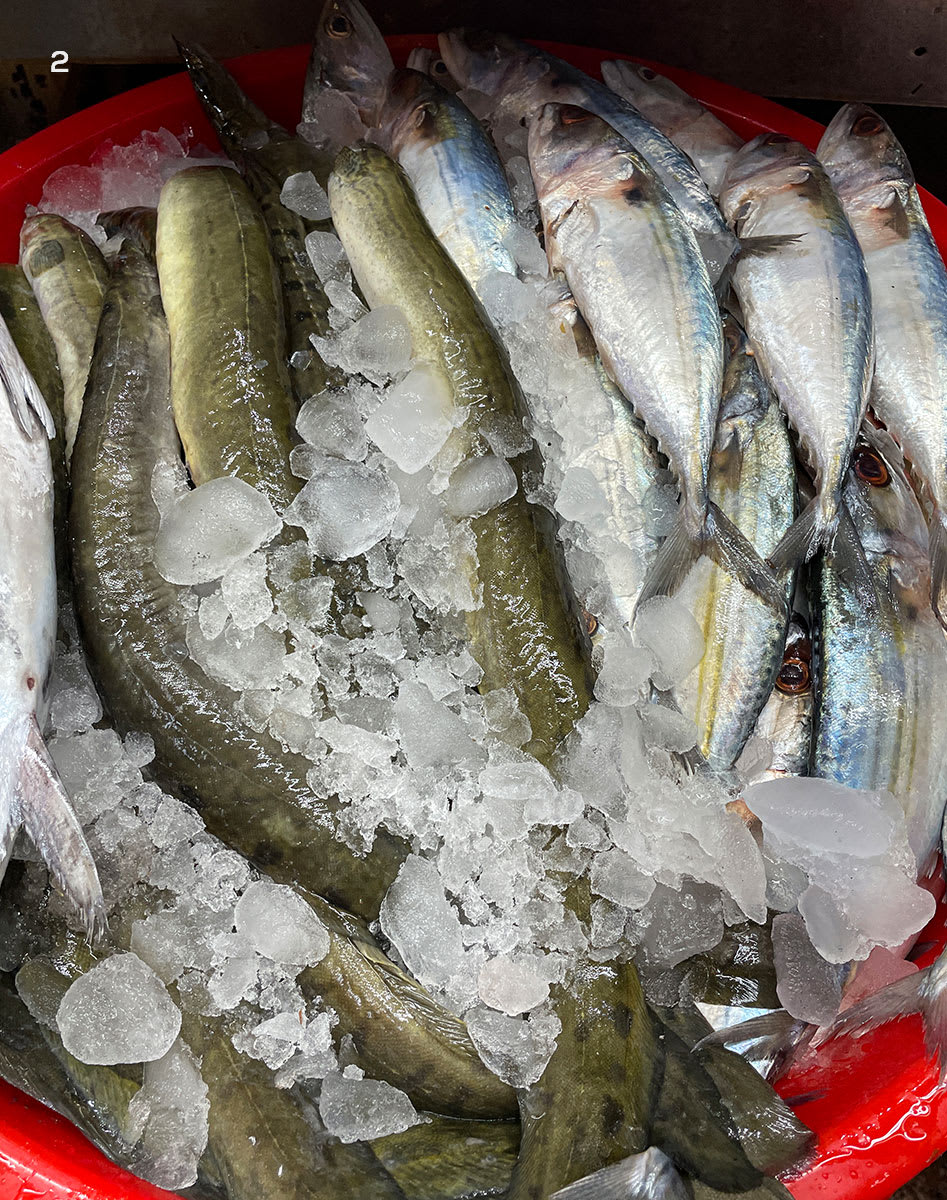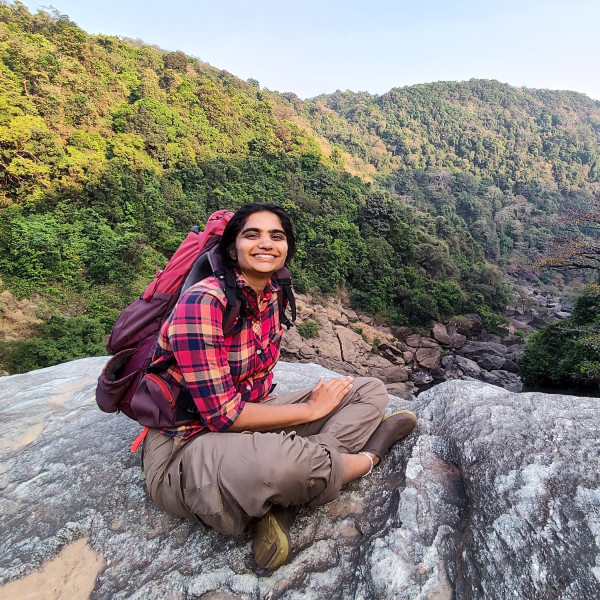 Listen to this article
•
15:34 min
Listen to this article
•
15:34 min
Fishing boats converge towards the coast against the orange horizon of the setting sun. I watch their formation, contemplating a scene of war juxtaposed against a serene and quiet landscape. I am at a fishing village near Majali on a beach between Goa and Karnataka. Rocky hills and thick vegetation separate the two states on land. As I climb these hills, I could draw a line in the sand and tell you where Karnataka ends and Goa starts. But I would be lost at sea if you asked me to draw one across the glinting water. Unlike me, fishes find their way through the seas by tuning into the sounds and smells of their home, unaware of political boundaries. I can almost picture them crossing into Goa with me, albeit more deftly.
Fish can ignore political boundaries in their search for good breeding and foraging grounds, but the fishermen seeking them cannot. While the central government can provide fishing policies as guidelines, it is up to each state to implement them as it sees fit. “Nothing in the national policy mandates that states should coordinate their fisheries practices, or even that they share information with each other,” added Mayuresh Gangal, a fisheries scientist from the Nature Conservation Foundation (NCF).
Along our western shorelines, this has led to Kerala, Karnataka, Goa, Maharashtra, and Gujarat differing in their fishing practices. They hurl their nets into one giant honeypot called the Arabian Sea, but the rules of the game change from one state to another. It is likely that policies framed keeping in mind the welfare of Gujarat may have some rippling effects washing ashore on neighbouring Maharashtra. With the decline of our fish stocks over the last two decades, states sharing waters could make great strides in sustaining their fish populations with some inter-state cooperation.

Cover photo: Fishermen lay a net in a wooden boat in Goa. Rampant bull trawling by Maharashtra and Karnataka near Goan waters has raised alarm bells for Goa’s fishermen. One interceptor vessel surveils the entire 160.5 km stretch of Goa’s coast. Video: cinejinn/Getty Images
Policy Meets Science
By the turn of this century, fisheries had acknowledged overharvesting as a critical issue. We have proportionally smaller catches for the same amount of fishing effort. However, production remains the yardstick for fisheries’ success. Fish populations are still treated as inert resources without linking each species to the ebbs and flows of its life cycle. Ensuring we have fish stocks for decades to come will require knowledge of fish biology.
So, what biology governs the abundance of fish in our seas? Identifying and protecting safe habitats for species-specific breeding seasons may be necessary to ascertain stable reproduction rates. The abundance of fish today may also depend on the demography of earlier generations. For fish that breed late in their life and spawn a few eggs, catching more of their juveniles can severely shrink successive generations. On the other hand, species that live in the fast lane and spawn millions of eggs can survive even if some juveniles are fished out of the sea.
Our policies protect breeding adults with a monsoon fishing ban, the equivalent of an effective “Do Not Disturb” sign. It is one of the few policies that all five states follow. The policy protects the interests of small-scale fisheries, but adult fish were expected to benefit too. However, the Central Marine Fisheries Research Institute reported no improvement in catch even after the imposition of the ban. A recent study by NCF hints at one possible reason. The reproductive seasons of 60 per cent of the most commonly caught fish species fall outside this period, possibly leaving them vulnerable while breeding.

Juveniles are protected in our policies by setting minimum mesh sizes for nets. Any fish tinier than the mesh can escape, leaving catches with more adults. But can we have one optimal mesh size allowing the escape of both larger juveniles like pomfrets and smaller ones like sardines? Some states have species-specific recommendations. Kerala is at the forefront with recommendations for 44 species, while Karnataka and Goa have recommendations for 19-20 species. Recommendations for minimum mesh sizes may vary depending on the fishing gear used. Kerala retakes the lead with recommendations for gill nets, trawling, and purse netting. Goa has no such gear specifications, while Gujarat, Maharashtra, and Karnataka follow the recommended size of 35 mm for trawling.
Kerala is not the only harbinger of hope. Maharashtra has committed to reducing purse netting, which is considered a highly destructive method of fishing due to significant juvenile death rates. Gujarat protects its mangroves and regulates the harvesting of oysters. But we need to do more to safeguard our habitats with a clear intent of maintaining fish populations. India has even considered expanding fishing activities into Antarctic waters, but such spatial fixes only drag problems further away from our coasts. We have committed to protecting sensitive marine habitats in a recent 2017 international treaty, which must be reflected in our state policies.
The Horizon Ahead
This has been the story so far. Policies are slow in addressing overharvesting, with most reforms inadvertently having ecological benefits, which begs a timely question: What should be the focus of policymakers? According to Gangal, the key focus should be “sustaining and ensuring livelihoods of economically marginalised people currently dependent on marine capture fisheries and the ecological integrity of our water. Acknowledging that a biological limit exists to the growth of fish populations is pivotal for this.”
Perhaps policymakers need a fish-eye view of the data and the ground realities. But as consumers, we also have a stake at the table. As the boats reach the shores, I look for a place to eat some fish. A local fisherman, Raju, tells me he has some bangda (Indian mackerel). I know it is a fish I can have in February because of “Know Your Fish” (www.knowyourfish.org.in), a website founded by Indian scientists which informs and educates consumers on what fish to eat and when. This useful website can help consumers do their bit to reduce the immense pressure on supply chains. We can all do our part while we wait for policymakers to do theirs.






